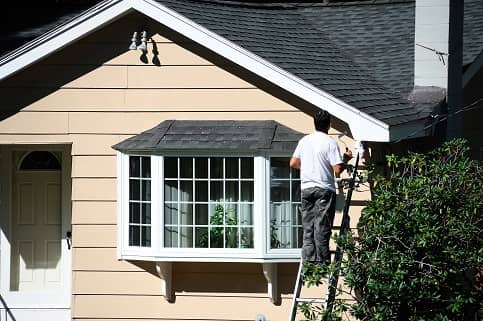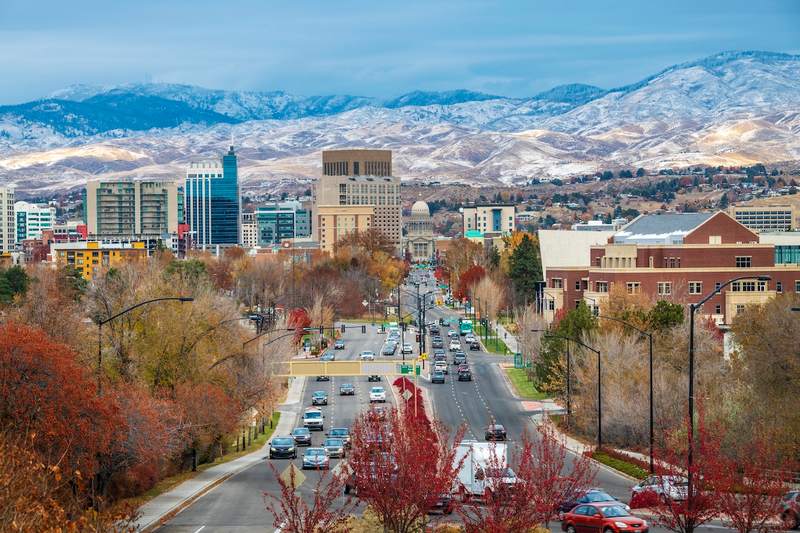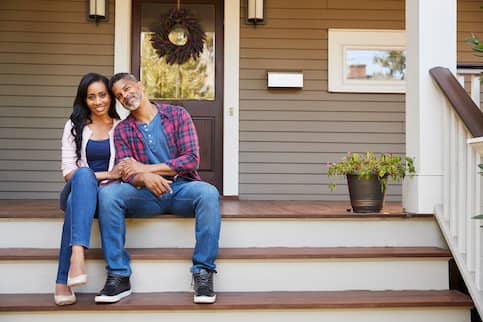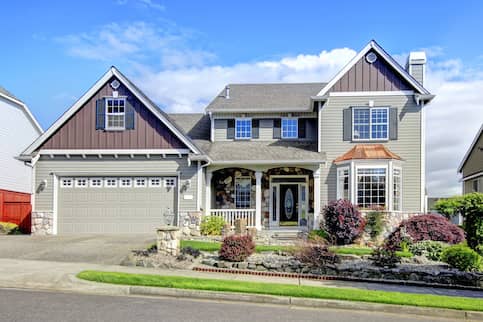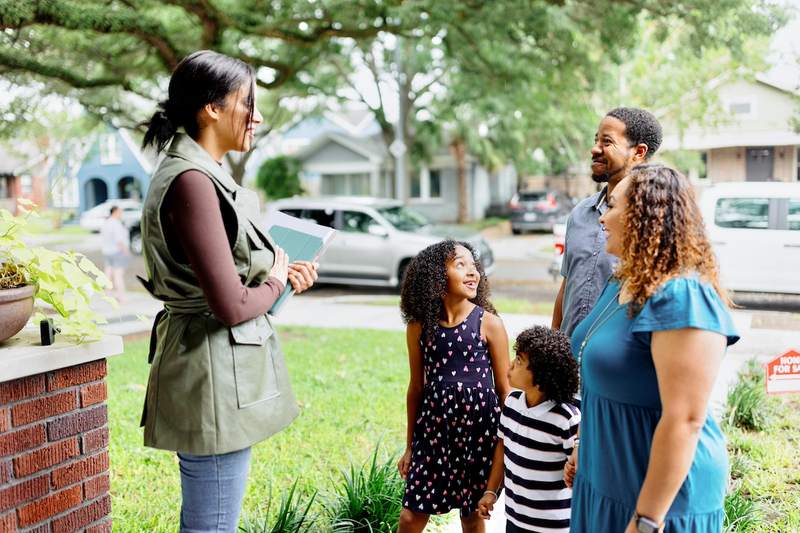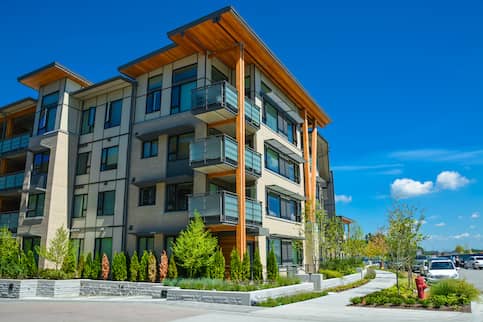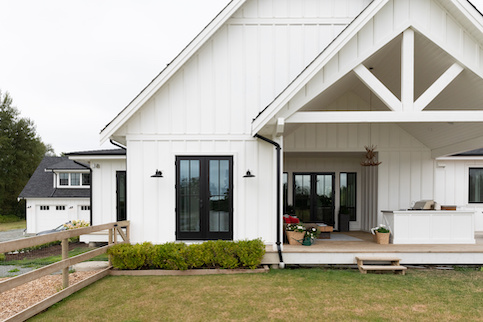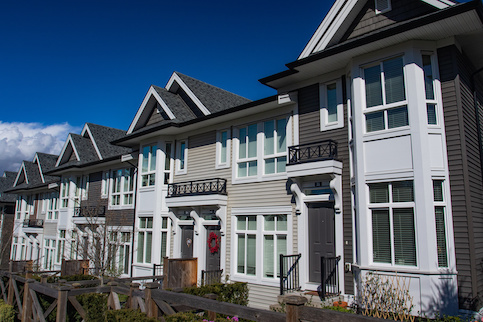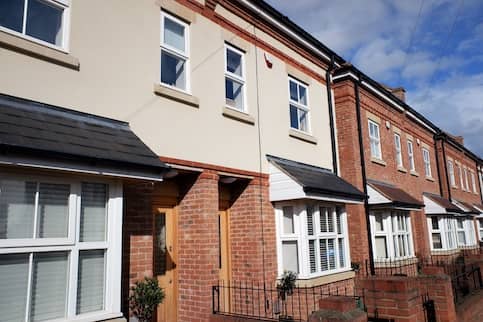Spending $50,000 to make $100,000 may sound like a deal. However, flipping homes requires accurate cost estimation, not to mention plenty of hard work. In addition, you must account for the purchase price, home repair costs and sale costs when flipping houses. As a result, you can turn a healthy profit with each project, although you might not double your money with every home.
If you’re wondering, “how much does it cost to flip a house?”, about 10% of your purchase price is a reasonable estimation of costs. However, numerous factors can influence this figure.
What Is The Average Cost To Flip A House?
The average cost of flipping a house depends on the property type, location and the extent of the renovations. As mentioned above, investors should expect to spend around 10% of a home’s purchase price to flip a property. For example, say you buy a house for $150,000 and want to flip it for $300,000. As a result, it’s wise to allocate at least $15,000 for the costs of flipping. It’s important to remember that this is just a general rule of thumb.
To determine how much money they’ll need overall, investors must add up the cost to finance and rehab the home, as well as carrying costs and other related expenses.
See What You Qualify For
Buy A Home
Discover mortgage options that fit your unique financial needs.

Refinance
Refinance your mortgage to have more money for what matters.
Tap Into Equity
Use your home’s equity and unlock cash to achieve your goals.
What Goes Into The Cost Of Flipping A House
If you’re interested in investing in real estate, it’s best to understand what goes into the cost of flipping a house. Here’s a handy list to use to get an accurate cost estimate.
Purchase Price
The purchase price is a primary driver for the total costs of flipping a house because it’s usually the highest cost. As a result, it’s crucial to keep this cost low by targeting low-priced homes. For example, you might look in neighborhoods with lower prices than the surrounding areas or focus on foreclosed houses. Keep in mind that, even if you finance the purchase, you must make a down payment on the home. Since this is an investment property, you’ll likely need to put down 15% — 20% depending on your credit and other factors.
Closing Costs
Remember, closing costs are part of flipping a house as they are with buying a primary residence – if you’re financing the purchase. Closing costs typically run between 3% and 6% of the purchase price. These fees include the appraisal, title search, lender fees, attorney fees. So, a conservative budget will plan for closing costs of 5% to 6% to prevent an overage.
Taxes
Likewise, buying a house means paying state and local property taxes. Your municipality will apply a specific percentage to the home’s value to charge property taxes. Specifically, property taxes range from 0.28% to 2.49% of the home’s assessed value, depending on your state and locality.
Rehab Costs
Flips involve rehab and renovation costs. In other words, you’re buying a fixer-upper, so you’ll deal with the following costs:
- Building materials: From bricks to countertops, each repair requires specific materials. These become part of your cost/benefit calculation when flipping. For instance, if you’re repairing the roof, you can choose between asphalt composite shingles, which are usually cheaper, or membrane roofing, which costs more but can last longer.
- Cosmetic materials: Likewise, cosmetic materials will influence your rehab budget. For example, putting in kitchen cupboards with wood veneers instead of solid wood cupboards can reduce costs without affecting your sale price.
- Professional labor: While flipping is generally more profitable if you do the work yourself, you might need to outsource high-skill jobs, such as redoing electric wiring. Fortunately, you can hire a contractor to complete the job satisfactorily. Doing so adds to your rehab costs but is indispensable for specific kinds of work.
Carrying Costs
Carrying costs are the expenses necessary to keep a property before selling. For example, flipping a house means paying the mortgage, taxes, utilities, insurance and HOA fees until the house sells.
Marketing And Selling Costs
Selling the home incurs expenses as well. Your selling costs will include the real estate commissions, usually 6% of the purchase price. So, selling a house for $300,000 means subtracting $18,000 from your profits to pay the real estate agents who facilitated the deal.
Additional Costs To Consider When Flipping A House
Flipping a house may bring unexpected costs that hurt your bottom line when you’re unaware of them. Here are the extra costs you might overlook:
Loan Costs
Being a house flipper means experiencing both sides of the home transaction. First, you’re the buyer, meaning you may take out a mortgage to purchase the investment property. Mortgages incur a host of fees, such as loan origination fees, inspections, appraisals, insurance and discount points. These can raise your costs by thousands of dollars, so it’s beneficial to shop around for a lender that will give you a favorable deal.
Permits
Municipalities usually give permits for significant home repairs or renovations. For example, you might need a permit for redoing a bathroom or putting an addition on the home. Each permit can cost several hundred dollars.
How To Determine How Much Money You Need To Flip A House
Remember, real estate is a good investment if the sale is profitable. To make a healthy profit when flipping, real estate investors calculate how much money they’ll need, complete necessary repairs and hit their target sale price.
On the other hand, you can also implement the BRRRR method when flipping, which stands for buy, rehab, rent, refinance and repeat. This option means retaining your properties and renting them out to tenants instead of selling. In either scenario, here are a few tips to estimate your costs and profits when flipping.
Use The 70% Rule In House Flipping
While 10% is a reliable ballpark figure for flipping expenses, you can also use the 70% rule to decide if a home is worth buying. This rule limits your expenses to 70% of the after-repair value (ARV) minus the estimated repair costs, ensuring you make worthwhile money with the flip.
Now to return to the example with this rule in mind. Your goal is to have a $300,000 ARV. Your purchase price plus repair costs shouldn’t rise above $210,000, which is 70% of $300,000. Therefore, if you buy the home for $150,000, you can put up to $60,000 of repairs into it and still turn a sizable profit when selling it for $300,000.
Determine Your Return On Investment (ROI)
Determining your return on investment (ROI) will ensure you profit from your investments. Specifically, ROI weighs costs against profit in the following way:
ROI = (Investment Gain – Cost of Investment) / (Cost of Investment)
The resulting number is a decimal you can also express as a percentage. For instance, say you sell a home for $300,000 with a total flipping cost of $200,000. The formula would contain the numbers in the following way:
(300,000 – 200,000) / (200,000)
(100,000) / (200,000) = 0.5
So, your ROI would be 0.5, or 50%. In other words, you received the money you spent on flipping plus a 50% profit.
Remember, while flipping means spending money to make money, you don’t have to repair every last single part of the home. Specifically, the best home improvements for increasing home value on the interior are hardwood flooring refinishing, new wood flooring, insulation improvements, finishing the basement and closet renovations. On the other hand, replacing an aged but working refrigerator can increase costs while not helping your resale value.
Ways To Save Money When Flipping A House
Fortunately, your ROI isn’t set in stone. These strategies can help you conserve cash when flipping houses:
- Negotiating the purchase price: Negotiating the purchase price can reduce the primary cost of flipping homes. For instance, you can ask the seller to cover your closing costs or leave their furniture if it’s in good condition. In addition, you can work with a real estate agent to negotiate on your behalf.
- Seeking quotes from multiple contractors: You can shop around for contractors when you need professional work. Getting quotes from several contractors can help you get the best deal, saving money when flipping a house.
- Beginning demolition yourself: Demolishing a home can cost upward of $18,000, depending on the home’s size. So, tackling the simpler parts of demolition can save you $15 or more per square foot. That said, it’s best to get quotes from contractors to understand your savings potential. Demo work can be dangerous and can cause major issues if you do it incorrectly. If you are going to DIY some of the demolition, consult a professional.
Financing A Flipped House
You have several loan options to start house flipping besides a traditional home loan through a mortgage lender. The following products can provide a solid foundation for your flipping ventures:
- Home improvement loan: A renovation loan, or home improvement loan, is for a home purchase with planned repairs. Specifically, this loan requires an appraisal using the estimated ARV. In addition, this loan type has identical interest rates to conventional mortgages.
- Home equity loan: A home equity loan can finance a house flip if you have sufficient equity. For example, your home repair estimate might be $20,000. If you can access at least that amount in the home’s equity, you can use it for a repair loan. However, these loans have higher interest rates than traditional mortgages.
- Home equity line of credit (HELOC): Similarly, a home equity line of credit (HELOC) turns your equity into a revolving line of credit. You can withdraw money over several years before you start paying it back, which is helpful if you want to take your time with the repairs. The drawback is higher interest rates which can fluctuate with the housing market.
- Personal Loan: You can get a personal loan from a lender for almost any purpose. In addition, you can secure funding in as little as 24 to 48 hours. The cost is a higher interest rate than a mortgage. However, you can reduce your interest rate by providing collateral and securing the loan. Remember, doing so is a double-edged sword because securing the loan means risking losing your collateral if you default.
- Crowdfunding: If the traditional lending route isn’t for you, a team of investors can finance your investment. For example, getting three investors to lend $5,000 apiece will provide $15,000 for repairs without owing interest. The pitfall of this tactic is splitting up the profits among your investors instead of keeping 100% of it for yourself.
The Bottom Line: Flipping Houses Can Be A Worthwhile Investment If Calculated Correctly
Flipping a house means paying around 10% of the purchase price for repair and sale costs. However, if your flipping efforts get pricier, keeping your total costs under 70% of your after-repair value is a good rule of thumb. Likewise, reducing your purchase price, repair expenses and selling fees can improve your profits.
Remember, you can use loan products other than conventional mortgages to finance flipping. For example, a home improvement loan, personal loan or crowdfunding can provide the cash you need while minimizing costs.

Ashley Kilroy
Ashley Kilroy is an experienced financial writer who writes for solo entrepreneurs as well as for Fortune 500 companies. She is a finance graduate of the University of Cincinnati. When Ashley isn’t helping people understand their finances, you may find her cage-diving with great whites or on safari in South Africa.
